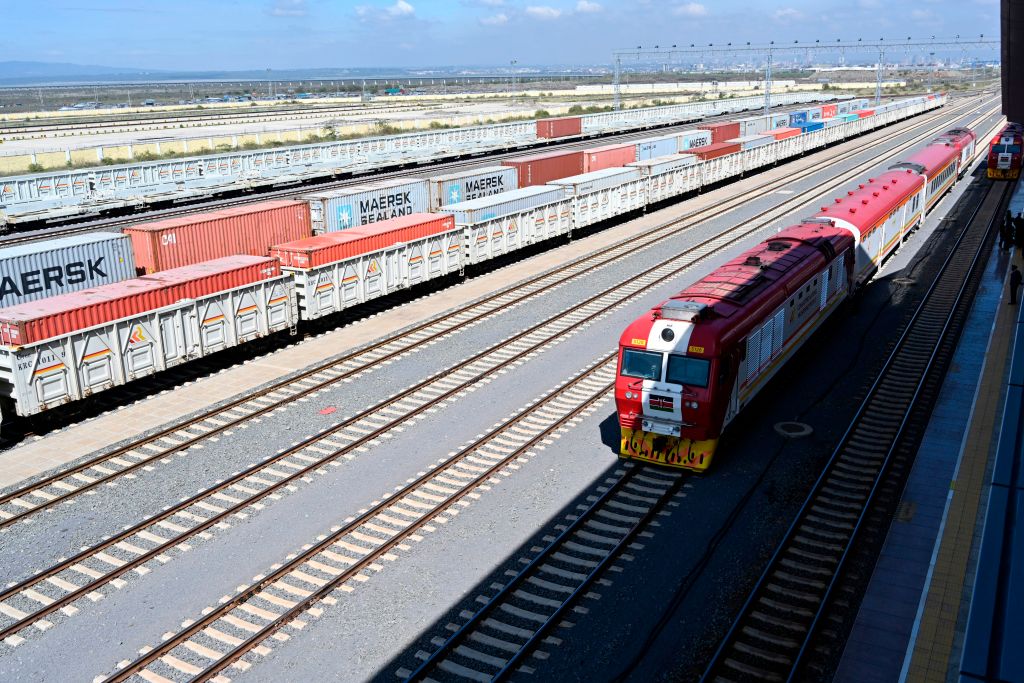ADF STAFF
Kenya’s Standard Gauge Railway was billed as a major economic driver that would benefit the region. However, six years after it opened, the railway has become a financial burden for the country and a key part of its deteriorating relationship with China.
The railway was built by the China Road and Bridge Corporation under former President Uhuru Kenyatta based on a no-bid contract and with a $3.6 billion loan from China’s Exim Bank.
The China Road and Bridge feasibility study claimed the railway would be profitable by moving 22 million tons of freight a year, or 20 trains a day, every day. That’s more than double the line’s actual operating capacity, according to a study by the Kenya Institute for Public Policy Research and Analysis.
Instead, the railway carries a quarter of that, making it impossible for the line to pay for itself. In 2021, the railway lost $200 million. That was after Kenyatta decreed in 2019 that cargo traffic would travel by rail rather than trucks — a decision that created upheavals in the livelihood of Mombasa’s trucker community.
Shortly after being elected in 2022, President William Ruto reversed Kenyatta’s order but the government is still on the hook for repaying the loan. After several years of deferred payments, Kenya’s first payment to China in 2021 was more than $237 million. In 2022, it more than doubled to $558 million.
While Kenya’s financial leaders say its debt remains sustainable, they emphasize that the country must take action before debt crushes the economy.
“We need to be clear in the direction debt is taking us,” Patrick Njoroge, governor of the Central Bank of Kenya, said in September. “The time is now. We don’t need to wait until it is crushing us.”
Chinese loans make up 67% of Kenya’s debt, which has reached a historic $82 billion, or about three-quarters of the national gross domestic product. As Kenya’s debt payments increase, they leave less money for other purposes, such as health care and security.
Shortly after taking office, Ruto revealed three portions of the Chinese loan, which had been declared illegal by the country’s highest court because it was undertaken without a competitive process. The loan documents required the conditions be secret.
Kenya’s government has asked its Chinese lenders to extend their repayment period another 30 years on what has grown to a $5 billion loan with the addition of the $1.4 billion extension to the Naivasha Inland Container Depot. In June 2022, China fined Kenya nearly $11 million, saying it had defaulted on its railway payments. Kenya has denied that claim.
Under pressure from increasingly troubled loans around the world, China has begun pulling back on new lending and is hardening its stance on repaying its existing ones. Last year, China said it would not loan more money to extend the railway to Uganda and beyond. The railway now ends in an empty field in the Rift Valley about 320 kilometers from the Ugandan border.
In January 2023, Uganda announced it was abandoning its contract with a Chinese company in favor of a Turkish one to build its own railway from Kampala to the Kenyan border.
Njoroge told a legislative committee last fall that the railway and other Chinese-funded infrastructure projects were a drain on the economy when they should be the opposite.
“Investment in infrastructure should stimulate the economy,” he said. “Why is it that we cannot capture more turns on the investment in infrastructure?”

